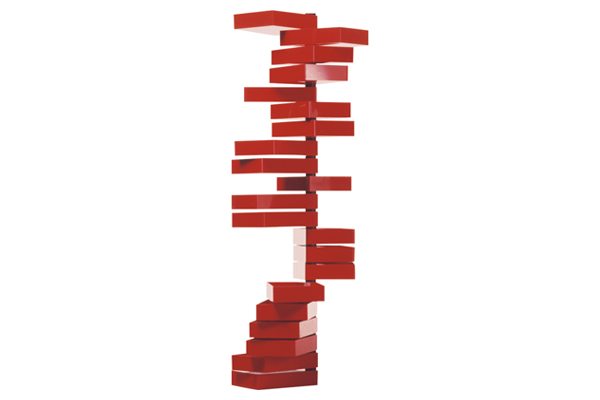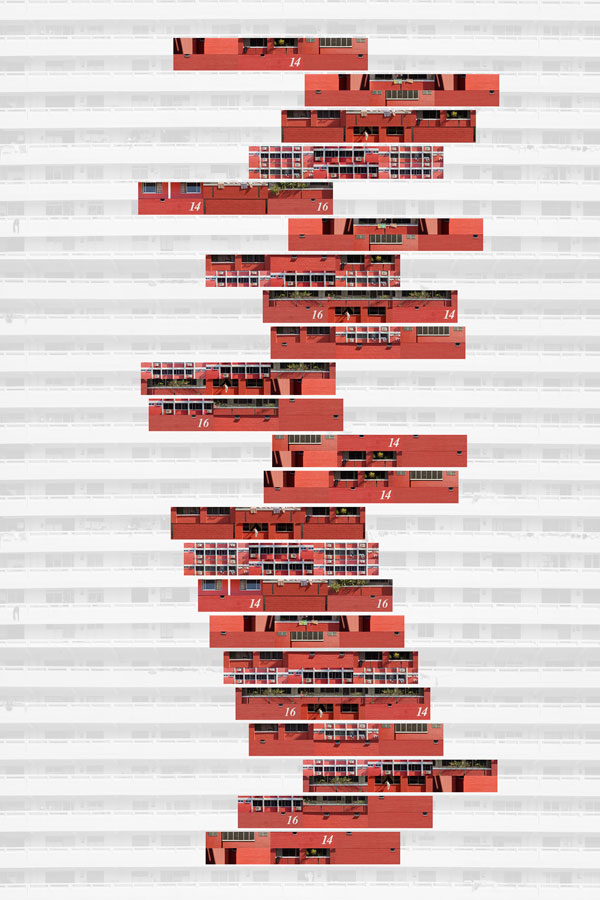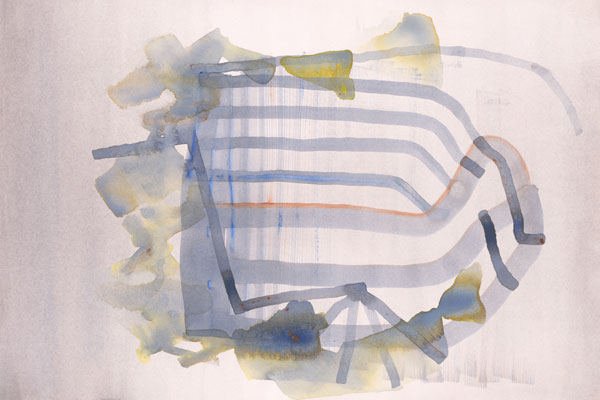Five local designers reinterpret five furniture staples of Italian furnishing brand Cappellini, with the works to be shown at DREAM. Olha Romaniuk reports.

March 11th, 2015
Top image: Cappellini’s Proust Geometrica Chair
Having cemented its name as a furniture trendsetter, Italian label Cappellini has been known to work with gifted designers over the years on unique products and furniture pieces. This year, to coincide with the SG50 campaign, Cappellini and furniture retailer DREAM have collaborated on a unique project where five home-grown talents in the creative industry have been invited to design one-of-a-kind art pieces inspired by iconic Cappellini products.
Having selected their Cappellini product of choice, the chosen five – PHUNK (contemporary art and design collective), Darren Soh (landscape and architectural photographer), Ian Woo (artist and painter), Desinere (design consultancy studio) and Vincent Leow (contemporary imagist) – will showcase their reinterpretations of the selected pieces during an exhibition, which opens on 12 March. True to the collaborative nature of the Capsule Project, the artists’ main aim is to capture the ethos of Cappellini’s avant-garde spirit in their creations, while also providing their distinct stamp on the chosen designs through their craft of expertise.
Ahead of the exhibition opening, the artists offer insights into their pieces. Having selected the Cappellini Proust Geometrica Chair as their design muse, PHUNK have taken cues from the bold colours of the chair’s fabric upholstery originally designed by Alessandro Mendini. Photographer Darren Soh has selected Cappellini’s Revolving Cabinet, designed by Shiro Kuramata, to serve as a basis for his collage of public housing images. Known for his abstract paintings, Ian Woo has been inspired by the minimalist lines of the Cappellini Sekitei Chair for the structural foundation of his work. Similarly to how the Cappellini Ribbon Stool’s form mimics the laces of a ballet shoe, Desinere has used the form and movement of ballet dancers for a sculpture piece. Lastly, Vincent Leow’s design has drawn inspiration from the Cappellini Fish Chair, seeking to become a companion piece to the original, designed by Satyendra Pakhale. We find out more.
PHUNK
Your firm is multidisciplinary and draws influences from many different sources. Given that you had to design an art piece based on your craft of expertise, how did you decide to approach this project? What is the concept for your piece?
We have always loved the Proust Geometrica Chair by Cappellini. It is quirky and eclectic, a contemporary icon. When the guys from DREAM approached us for the project, our first instinct was to choose it as the chair to work on. We are currently working on a new series of artworks based on the alphabet letters A-Z. They are inspired by our collective childhood memories of the colourful animated alphabet from Sesame Street – a children’s television programme. Each alphabet has its own personality and quirk. As an extension to the A-Z series, we re-imagined and illustrated a customised alphabet that is inspired by the vibrant colours and graphical shapes of the Proust Geometrica Chair.
Melvin Ong (Desinere)
How have your previous experiences influenced your design for the DREAM + Cappellini project?
I come from a furniture/product design background and, when I was approached by DREAM, I felt it was a good opportunity to re-look at some of the fundamentals that I learnt during my course of study and work. I’ve always been very interested in line work and in this design project I wanted to express this flow of lines in a rather fluid manner spatially.
What were some of the key features that you took away from the Cappellini Ribbon Stool, and how did you make them your own in your design?
The Ribbon Stool drew its inspiration from the laces of a ballet shoe, so naturally I looked to dance as my inspiration. Each swirl and stroke in my sculpture represents the unadulterated movement of a dancer as a freedom of expression. Whilst the Ribbon Stool found inspiration in the structure and pattern of the ballet shoe, I wanted to complement this by expressing the fluidity and emotion that’s seen and felt in a ballet dance.
Darren Soh

Cappellini’s Revolving Cabinet
What techniques did you decide to use to translate Shiro Kuramata’s design, which is a 3D installation, into a 2D reinterpretation?
Although Shiro Kuramata’s design is 3D in nature, it has a very strong 2D silhouette when viewed directly from the front. In a way, this is similar to many of our HDB flats: they are 3D spaces but their façades present an almost endless permutation of mixed and matched possibilities due to design as well as appropriation by the residents – the hanging of clothes, the growing of plants, etc. Similarly, the revolving cabinet can be configured and reconfigured to the user’s liking. It is because of this similarity between the cabinet and HDB flats that I decided to create the artwork in the manner I did.

Darren Soh’s ‘Building Blocks’
What message do you hope to convey with your art piece?
I am a strong champion of the documentation of Public Housing in Singapore, because I feel they are often overlooked and not given the attention they deserve as really successful and even beautiful pieces of architecture. Here, I’ve used them in a different way and, at first, you don’t realise they are what they are, but upon closer look you will come to a realisation. I hope that this will lead more people to go out and look at HDB flats in a different light, perhaps.
Ian Woo
How did you reinterpret the Sekitei Chair into an abstract form?
I took the lines from the chair as a starting point. I was thinking about the fluidity of water and made several drawings with diluted acrylic colours. I came up with two versions – one that was like an emblem and the other made up of fragmented lines. The lines ‘caught’ onto the colours that I was using and it reminded me of the way light would shift through and between the lines of the chair and an imaginary garden or forest.

Ian Woo’s reinterpretation of the Sekitei Chair
Is your Sekitei Chair-inspired artwork in line with your other paintings in terms of style and language or have you taken a different approach with this particular piece?
Like all my work I approach the drawings in an improvisational manner, allowing the lines to dictate form and formlessness. They were done very quickly, each drawing dictating an instantaneous process of thought and vision.
Vincent Leow
In what way does your art piece complement the Cappellini Fish Chair and in what way does it stand on its own?
I have made my piece resemble an almost exact copy of the Cappellini Fish Chair; they are almost identical twins but are different and complementary. One is a chair and the other suggests that while it may look like the Fish chair, it isn’t. I hope that the piece makes individuals ask themselves not what it may represent but what we think of it instead.
How have the themes of your works influenced the direction you took with your art piece for this exhibition?
The current theme in my work explores ways to remember the innocent children that lost their lives to the atrocities of war, via text and form. Similarly, for the piece that I have made in response to the Capellini Fish Chair I have incorporated some of the elements of text and form.
DREAM would like to invite you to the opening of the Cappellini Capsule Project exhibition on Thursday, 12 March, 7pm. Go to http://goo.gl/JL2nfI to RSVP.
The exhibition runs from 12 – 31 March 2014 at DREAM, 456 River Valley Road, Singapore 248342, Tel: 6235 0220.
A searchable and comprehensive guide for specifying leading products and their suppliers
Keep up to date with the latest and greatest from our industry BFF's!

Channelling the enchanting ambience of the Caffè Greco in Rome, Budapest’s historic Gerbeaud, and Grossi Florentino in Melbourne, Ross Didier’s new collection evokes the designer’s affinity for café experience, while delivering refined seating for contemporary hospitality interiors.

Marylou Cafaro’s first trendjournal sparked a powerful, decades-long movement in joinery designs and finishes which eventually saw Australian design develop its independence and characteristic style. Now, polytec offers all-new insights into the future of Australian design.

Sub-Zero and Wolf’s prestigious Kitchen Design Contest (KDC) has celebrated the very best in kitchen innovation and aesthetics for three decades now. Recognising premier kitchen design professionals from around the globe, the KDC facilitates innovation, style and functionality that pushes boundaries.
Dutch manufacturer, Casala, teamed up with an inventor to produce a user-friendly solution to the stackable chair.

In a night of extravagant fun, Kaolin Tiles threw open its doors to its new showroom with a grand opening that will be remembered for years to come.
The internet never sleeps! Here's the stuff you might have missed

We spoke with George Fleck, Vice President and Global Brand Leader of W Hotels, about the intermingling of hotel and hospitality design trends.

London-based Carmody Groarke and Paris-based TVK have been announced as winners of a milestone competition for the new Bibliothèque nationale de France conservation centre.